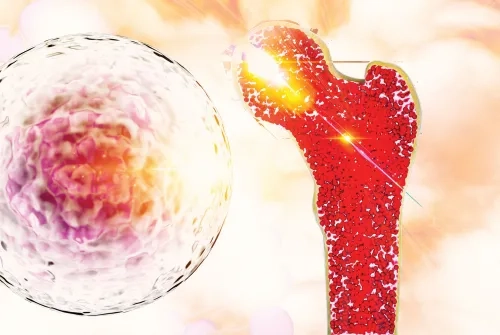Alo Yeditepe
Alo Yeditepe
Beware of Multiple Myeloma!
Stating that Multiple Myeloma, a type of bone marrow cancer, causes bones to weaken, break and weaken the immune system, Yeditepe University Hospitals Internal Medicine and Hematology Specialist explained the unknowns about this disease:
Multiple myeloma is a cancer of plasma cells, one of the white blood cells. Plasma cells in the bone marrow are normally involved in the production of antibodies and play an important role in the immune system. In this disease, abnormal plasma cells multiply uncontrollably and prevent the reproduction of other normal blood cells in the bone marrow. Although patients are usually between the ages of 6570 at the time of diagnosis, they have also been diagnosed at a younger age in recent years. It is slightly more common in men than in women.
Here are the Reasons
"The reasons for the development of multiple myeloma have not yet been clearly clarified. Factors that are accepted today include exposure to chemicals, oil, and radiation. Although there is no clear relationship with the diet, it is observed more frequently in animal fat-weighted diets and obese people than in vegetable and fish-weighted diets. Occupational and environmental factors are also among the other possible causes to blame. Nuclear industry employees, especially oil and leather industry and agricultural sector employees are considered as risky sectors for the development of Multiple Myeloma.”
What Symptoms Does It Show?
- Bone pains (especially low back and back), easy bone fractures.
- Weakness, getting tired quickly.
- Decrease in exertion capacity.
- Weight loss and loss of appetite.
- Decrease in conscious capacity, drowsiness.
- Much thirst and much urination.
- Nausea, vomiting, and hazy vision.
- Frequent febrile illness.
Although there are rarely patients diagnosed at an early stage before symptoms occur, people over 40 years of age who apply to the physician with complaints of weakness, low back/back pain, involuntary weight loss, and/or kidney failure should keep in mind the possible multiple myeloma disease and diagnostic tests.
What are the Treatment Methods?
Multiple myeloma can remain stable for a long time without progression. People with no symptoms and early-stage disease can be monitored without medication. Advanced-stage patients with disease-related symptoms should be treated. Treatment options are decided on a patient basis, in other words, according to the patient's age, performance, comorbidities, and stage of the disease. In the last 10 years, many innovations and treatment options have been developed in the treatment of multiple myeloma. While all of the drugs used in the treatment were chemotherapeutic drugs, today they are mostly used in combination with smart drugs that are not in the chemotherapeutic class.
This content was prepared by Yeditepe University Hospitals Medical Editorial Board.
Alo Yeditepe






